
All categories
Featured selections
Trade Assurance
Buyer Central
Help Center
Get the app
Become a supplier

(6627 products available)
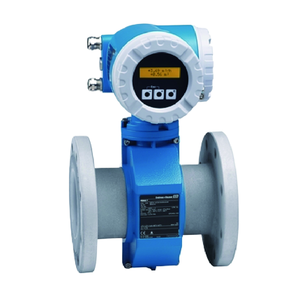
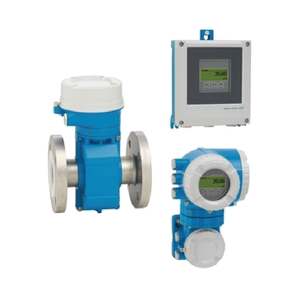




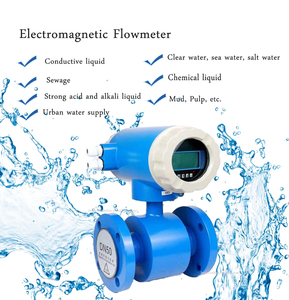







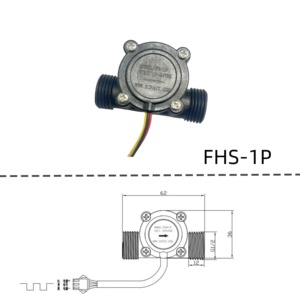













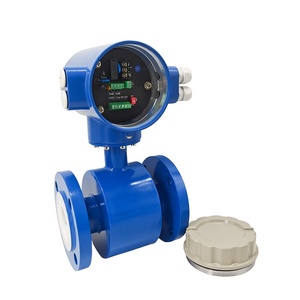
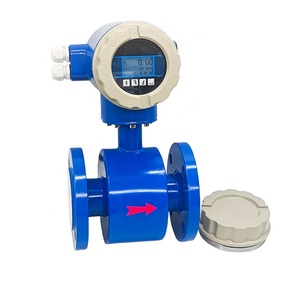
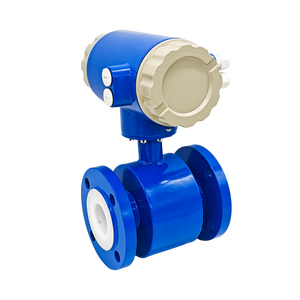

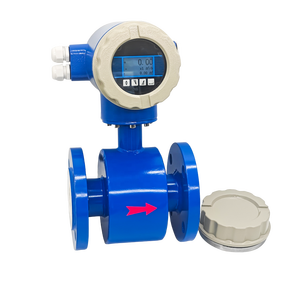
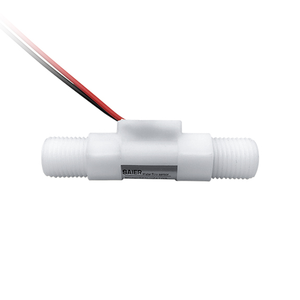
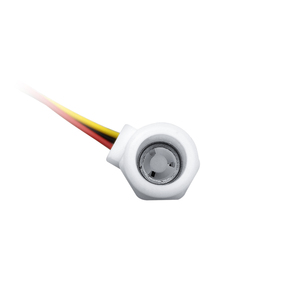

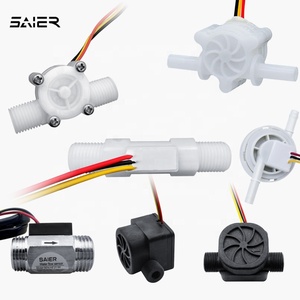





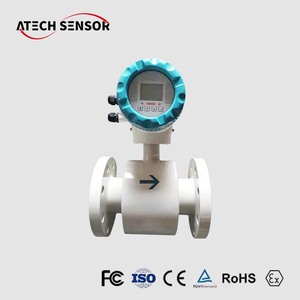
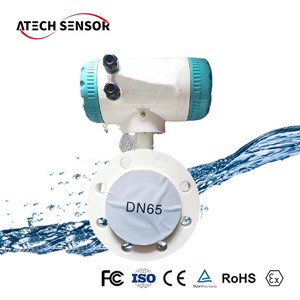

Electromagnetic flow meter sensors come in different configurations. The choice mainly depends on the specific requirements of the application. Here are the most common types of electromagnetic flow meter sensors:
Wafer Type
The wafer flowmeter is the most basic type. It is positioned between two flanges in a pipeline. These flowmeters are lightweight, which makes them easy to install in most pipelines. Due to their compact design, it's not uncommon to find this flowmeter in areas with limited space. Their lightweight construction makes them easy to transport and install.
Flanged Electromagnetic Flow Meters
Flanged electromagnetic flow meters are integrated with the pipeline by bolting them between existing flanges. This design is often used in new installations, providing a robust and secure connection. They handle high-pressure and large-diameter pipe applications.
Threaded Electromagnetic Flow Meters
Threaded electromagnetic flow meters are small and screw directly into the pipes. They are suitable for smaller pipe sizes and lower flow rates. These make an ideal choice when measuring fluid flow in smaller industrial or commercial systems.
Clamp-On Electromagnetic Flow Meters
These flow meters use magnetic coils and sensing wires that are clamped onto the outside of a pipe. They are a non-invasive and portable solution. They are then used to provide temporary measurements of fluid flow without cutting into the pipe.
Digital Electromagnetic Flow Meters
Digital electromagnetic flow meters with advanced signal processing algorithms provide highly accurate and reliable flow measurements in various industrial applications. The onboard digital displays and data transmission capabilities make them ideal for modern automated systems.
Analog Electromagnetic Flow Meters
Analog electromagnetic flow meters provide basic flow measurement without modern digital enhancements. They typically use basic mechanical or simple electrical components to measure and indicate flow. These meters are simple and cost-effective but often lack the precision and data logging capabilities of digital counterparts.
Hydraulic Electromagnetic Flow Meters
The water flow gauge is designed to measure the flow of conductive liquids like water with high accuracy. They are widely used in municipal and industrial water supply systems. The reason being water is a highly conductive liquid providing a stable electromagnetic field for accurate measurement.
Electromagnetic Flow Meters for Slurries
These flow meters are specifically designed to measure the flow of conductive slurries. They typically have a more robust construction. In addition, they have a higher sensitivity to the flow of thick, slurry-like materials.
Electromagnetic Flow Meters for Chemical Processes
Chemical processes usually involve measuring the flow of conductive acids, bases, or other chemical solutions. Meters designed for these applications often feature materials that are resistant to chemical corrosion.
Electromagnetic flow sensor meters are widely used across various industries due to their ability to accurately measure the flow of conductive liquids. Here are the key industrial applications:
Accurate Measurement
EMS flow meters provide precise measurement for both drinking water and wastewater flow. This helps ensure compliance with regulatory standards.
Monitoring and Control
They allow for better system monitoring and control by providing real-time data on flow rates. This information helps optimize processes like filtration and chemical dosing.
Handling Viscous Fluids
Electromagnetic flow meter with a digital display is suitable for measuring the flow of conductive fluids like crude oil emulsions. They handle thick fluids that other flow meters might struggle with.
Measurement of Slurries
These flow meters are valuable in measuring pipeline flow containing solid particles suspended in liquid, such as drilling mud.
Compliance with Hygienic Standards
They offer precise measurements of liquid food and beverage products. This adherence helps the food and beverage industry meet strict safety regulations.
Proper Measurement of Conductive Liquids
Many fluids in this industry like liquids are conductive. These flow meters are ideal for measuring milk, juices, and alcoholic beverages.
Accurate Dosing and Mixing
The accurate flow measurement helps ensure proper dosing of pharmaceuticals. This helps guarantee that medications are made with consistent quality and efficacy.
Corrosision-Resistant Materials
Digital electromagnetic flow meters often feature corrosion-resistant materials. This helps prevent contamination and ensure the safety of the drugs being processed.
Measuring Conductive Slurries
Conductive slurries used in mineral transportation and separation processes are measured by electromagnetic flow meters. This makes them indispensable in mining operations.
Durability in Harsh Conditions
These meters are designed to withstand the abrasive nature of mining materials. It ensures long-term durability and reliability in the field.
These are the key specifications and features of electromagnetic flowmeter:
Measuring Range
The measuring range varies by application, fluid type, and pipe diameter. Water flowmeters usually have a larger measuring range. This allows them to measure flow rate from a few liters per minute up to thousands of liters per minute.
Fluid Temperature
The maximum and minimum fluid temperature specifications ensure proper functionality. These specs prevent damage to the flow meter in industries like oil and gas and food processing that involve extreme temperatures.
Line Pressure Rating
This pressure rating is important for flow meters used in high-pressure pipelines, such as those in the oil and gas industry. It ensures the meter can withstand the pressure without failing.
Sensitivity to Flow Changes
This is crucial in processes where even small changes in flow can impact operations. High sensitivity meters provide precise measurements, even with slight variations.
Proper Placement
The flowmeter must be installed so that the fluid flows in accordance with the directional arrows on its casing. Placing the meter in a location with straight pipe sections both upstream and downstream is beneficial. Both the upstream and downstream sections should be at least 5-10 diameters long.
Electrical Connections
The electromagnetic flowmeter has electrodes that need to be connected to a power supply and output devices. Depending on the flow meter model, these connections are usually made using a digital display for flowmeters equipped with advanced features.
Verification of Installation
It is essential to check both the mechanical and electrical installations after installing the flowmeter. The flowmeter should then be calibrated using known flow standards for the specific fluids and flow rates it will measure in its operational environment.
Frequent Functional Checks
These help the users keep the flowmeter operational and identify potential issues before they cause downtime. Functional checks usually involve verifying the meter's flow readings against expected values based on known process conditions.
Regular Cleaning
Cleaning is essential because buildup of materials like sediment or chemicals inside the flow tube can interfere with the electromagnetic field. It ultimately leads to inaccurate measurements. The cleaning requirements depend on the fluid being measured and the conditions of the environment.
Inspection of Electrical Components
The electrical components of the flowmeter, including the sensors and wiring, should be checked regularly for signs of damage, wear, or corrosion. Maintaining these components ensures accurate signal generation and transmission.
Material Selection
The inner linings of electromagnetic flow sensors are made from premium materials like rubber and PTFE. This ensures that they have immense resistance against the corrosive nature of different fluids.
Corrosion-Resistant Construction
Digital electromagnetic flowmeter can be constructed using material like stainless steel and brass. These materials protect against the damaging effects of corrosive fluids.
Mechanical Strength
The meters should be strong enough to withstand vibration, pressure fluctuations, and other mechanical stresses commonly found in industrial settings. Users should look for devices that pass tests for shock and vibration resistance.
Certification
Look for the electromagnetic flowmeter sensors with certifications from relevant international quality standards. These standard certifications are like ISO, ANSI, or API. These certifications also ensure that the product meets the quality norms.
Proper Grounding
Correct grounding of the flowmeter is crucial for both safety and measurement accuracy. Failing to ground the meter appropriately can cause electrical surges that damage components. Improper grounding also leads to inaccurate flow readings.
Explosion-Proof Design
Precautions like using an explosion-proof flow meter are essential in this environment because of the potential risk. These meters are designed to contain explosions within the device. It prevents flames and debris from escaping into the surrounding atmosphere.
Regular Safety Inspections
Regular safety inspections help identify potential issues like electrical wear or exterior damage that could compromise safety in a hazardous environment. Inspections should follow a checklist that includes assessing the meter's housing, seals, and internal components for signs of wear.
Electromagnetic flowmeters measure fluids that have high ionic strength. These fluids include water, slurries, acids, and alkaline solutions. They can also measure conductive fluids that contain even small amounts of metal particles, electrolytes, or mineral content. What’s more, these flowmeters work with both clean and dirty fluids.
However, they specifically require the fluids to be at least minimally conductive. This is because these flowmeters use an electromagnetic field to measure flow, and that field needs a conductive path to complete.
Electromagnetic flowmeters are unable to measure non-conductive fluids like oils and gases. They are also unable to measure fluids that have low conductivity. This is because they don't have versatile rheological capability either.
These flowmeters are also highly sensitive to changes in fluid velocity. So, if there are any fluctuations in pressure, temperature, or even pipeline conditions, they are prone to become inaccurate.
Finally, particles in fluids can also have a negative impact on these flowmeters. Electrical interference and improper installation can also cause inaccurate measurements.
Install the flow meter with at least 10 diameters of straight pipe both upstream and downstream. Make sure the conductivity of the fluid is always above 5 Microsiemens. Correctly size the flowmeter to ensure the flow profile is evenly developed.
A flow conditioner can also be used to improve the meter's accuracy. Avoid installing the flowmeter near control valves or in areas with a high degree of turbulence. Finally, ensure the pipeline has a minimal amount of air bubbles.
One should verify the meter's operational parameters frequently. They should ensure the fluid always flows within the specified range. They should also check for physical and electrical damage.
If there is any sediment or other material buildup inside the flow tube, they should remove it immediately. The last maintenance tip is to ensure all electrical connections are tight and corrosion-free.